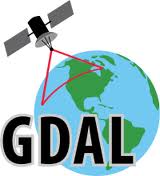| ウェブサイトをできるだけ多くの言語で地域化しようとしていますが、このページは現在Google Translateにより機械翻訳されています。 | 終了 |
-
-
製品
-
資料
-
サポート
-
会社
-
ログイン
-
.nitf ファイル拡張子
開発者: U.S. Department of Defenseファイルの種類: Imagery Fileあなたがで終わるファイル拡張子を持つファイルを持っているので、あなたはここにいる .nitf. ファイル拡張子を持つファイル .nitf 特定のアプリケーションだけで起動することができます。それがいる可能性があります .nitf ファイルは、それらが全く観察されることを意図していないことを意味するデータ·ファイルではなく、ドキュメントまたは媒体である。何です .nitf ファイル?
NITFファイルの拡張子は、米国国防総省が開発した国立画像伝送形式ファイルとして知られています。 NITF形式は、単一のファイル内のテキスト、グラフィックス、およびメタデータの組み合わせを含む撮像データフォーマットである。これは、文書を送信するために米国政府や軍によって使用されます。また、衛星および航空写真のために使用される。これは、政府のデータを格納し、送信するためのNATO二次的画像フォーマット(NSIF)と一緒に使用される。これは、画像圧縮のためのISO / IEC 15444-1標準のJPEG 2000を採用しています。これは、カラー、グレースケール画像や数値データを扱うFMEのフォーマット方法を使用しています。 NITF形式のファイルは、Microsoft Windows、Mac OSおよびLinuxプラットフォームでXnViewのと地理空間データ抽出ライブラリで開くことができます。 NITF 1.0、NITF 2.0およびNITF 2.1:NITFの3つのバージョンがあります。第二版は、より改善された形式であったが、バージョン1は、画像のみの形式が含まれていました。開く方法 .nitf ファイル?
起動 .nitf ファイル、または、それをダブルクリックして、PC上の他のファイル、。あなたのファイルの関連付けが正しく設定されている場合は、意味のアプリケーションが開くように .nitf ファイルには、それを開きます。それはあなたが適切なアプリケーションをダウンロードしたり購入する必要があります可能性があります。それは、あなたのPC上で適切なアプリケーションを持っている可能性もありますが、 .nitf ファイルはまだそれに関連付けられていない。このケースでは、開こうとすると、 .nitf ファイルは、そのファイルの正しい1であるアプリケーションは、Windowsを伝えることができます。それ以降、開く .nitf ファイルには、適切なアプリケーションを開きます。 .nitfファイルの関連付けのエラーを修正するには、ここをクリックしてください開くアプリケーション .nitf ファイル
 XnView
XnViewXnView
Considered as image viewer software, XnView allows users to manage data and tools for various applications. It is designed for photo and video viewing, converting, or sharing, as well as data creation like contact sheet, slideshow and pages for HTML. This product supports a variety of file formats from 400 readable images to 50 writable images, which are mostly standard such as PNG, JPEG and TIFF for photos, plus WAV, MP3 and WMA for audios, and MPEG for video. Other tools integrated include adjustment or editing of photos through filters, effects, color enhancement, size reduction, and rotation. With this program, audio and video files are available for ripping or burning to CDs and DVD too, but Nero Burning ROM is needed so that must be installed on the same computer you are using. Versions of this software are XnView MP, XnConvert, XnView Photo Fx, XnView Retro, XnView Sketch, XnView Pocket, and XnView Deluxe. fCoder Group Image Converter Plus
fCoder Group Image Converter PlusfCoder Group Image Converter Plus
Webshots Picture File or WB1 files are raster image files created by Webshots Desktop. This file contains a proprietary format of an image meant for access by Webshots. To run WB1 files, you can use applications like XnView or Ultimate Webshots Converter for Mac and Linux, Ultimate Webshots Converter, XnView, AG Interactive Webshots Desktop or fCoder Group Image Converter Plus for Windows. Image Converter Plus is a software that can convert image files to other image formats, being able to recognize at least 260 image files and more than 800 format dialects. You can resize your images singly or by folders. You can right click on the images to select and apply the operation that you want. A context menu is also provided to perform these functions. You can share your images quickly by uploading the images to Web albums and sending them by email, Picasa, FTP, Dropbox, Live Mesh or LAN. Before uploading, you can also add watermark to your images. GDAL
GDALGDAL
GDAL [Geospatial Data Abstraction Library] is a translator library for geospatial raster data files distributed under X/MIT as a free software by the Open Source Geospatial Foundation. It utilizes single abstract data model for all formats. It has command line utilities for data processing and translation. It was originally developed by Frank Warmerdam until it was officially turned over to the Open Source Geospatial Foundation. The OGR library is also part of GDAL source tree. GDAL/OGR has become a freeware because of its extensive data exchange capabilities and due to its widespread comprehensive functions. It provides support for more than 120 geospatial raster formats.FWTools SuiteFWTools Suite
FWTools is a suite of free GIS binary kit for Linux and Windows. The kits are intended for easy installation by end users. FWTools includes GDAL, MapServer, OpenEV, OGDI and PROJ.4 with some supporting elements. FWTools also aims to keep track of the development versions of packages included in the program rather than the official release versions. This will allow the developer, FW, the means to create bug solutions for a wider audience than would be covered and provided from the source. FWTools also supports JPEG2000, ECW, HDF and other formats requiring extra libraries. FWTools for Linux are designed to be agnostic to packaging and distribution system, making it compatible with any Linux system released in the last few years. Its subpackages are MapServer [a device for Web mapping], PROJ.4 [cartographic projections library provided with command line utilities], GDAL/OGR [a set and library of reading and writing command utilities of geospatial vector (OGR) and raster (GDAL) formats], OpenEV [analysis tool and data viewer for raster/vector desktop], OGDI [multi-format vector and raster reading technology that supports military formats like RPF [CIB, CADRG], VPF [VITD, VMAP] and ADRG and Python scripting language.戒めの言葉
上の拡張子の名前を変更しないように注意してください .nitf ファイル、またはその他のファイル。これは、ファイルの種類を変更することはありません。特殊な変換ソフトウェアを別のファイルタイプのファイルを変更することができます。ファイルの拡張子は何ですか?
ファイル拡張子は、ファイル名の末尾の3つまたは4つの文字の集合であり、この場合には、 .nitf. ファイル拡張子は、それがファイルのタイプを教えてくれて、それを開くことができますどのようなプログラムは、Windowsを教えてください。あなたがファイルをダブルクリックすると、プログラムが自動的に起動するように、Windowsは、多くの場合、各ファイルの拡張子を既定のプログラムに関連付けます。そのプログラムがPC上でなくなったときに、関連付けられたファイルを開こうとすると、時々エラーを取得することはできません。コメントを残す

